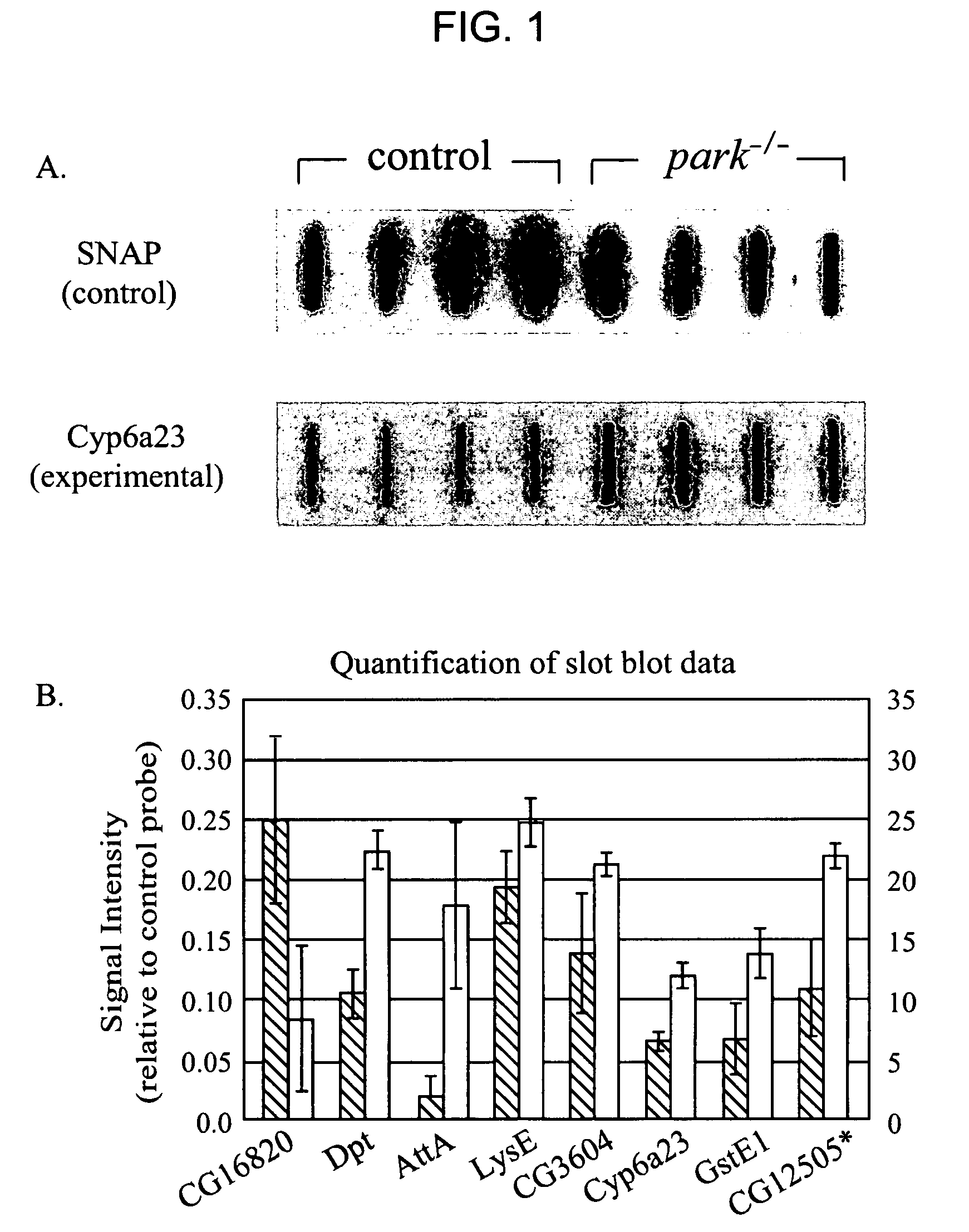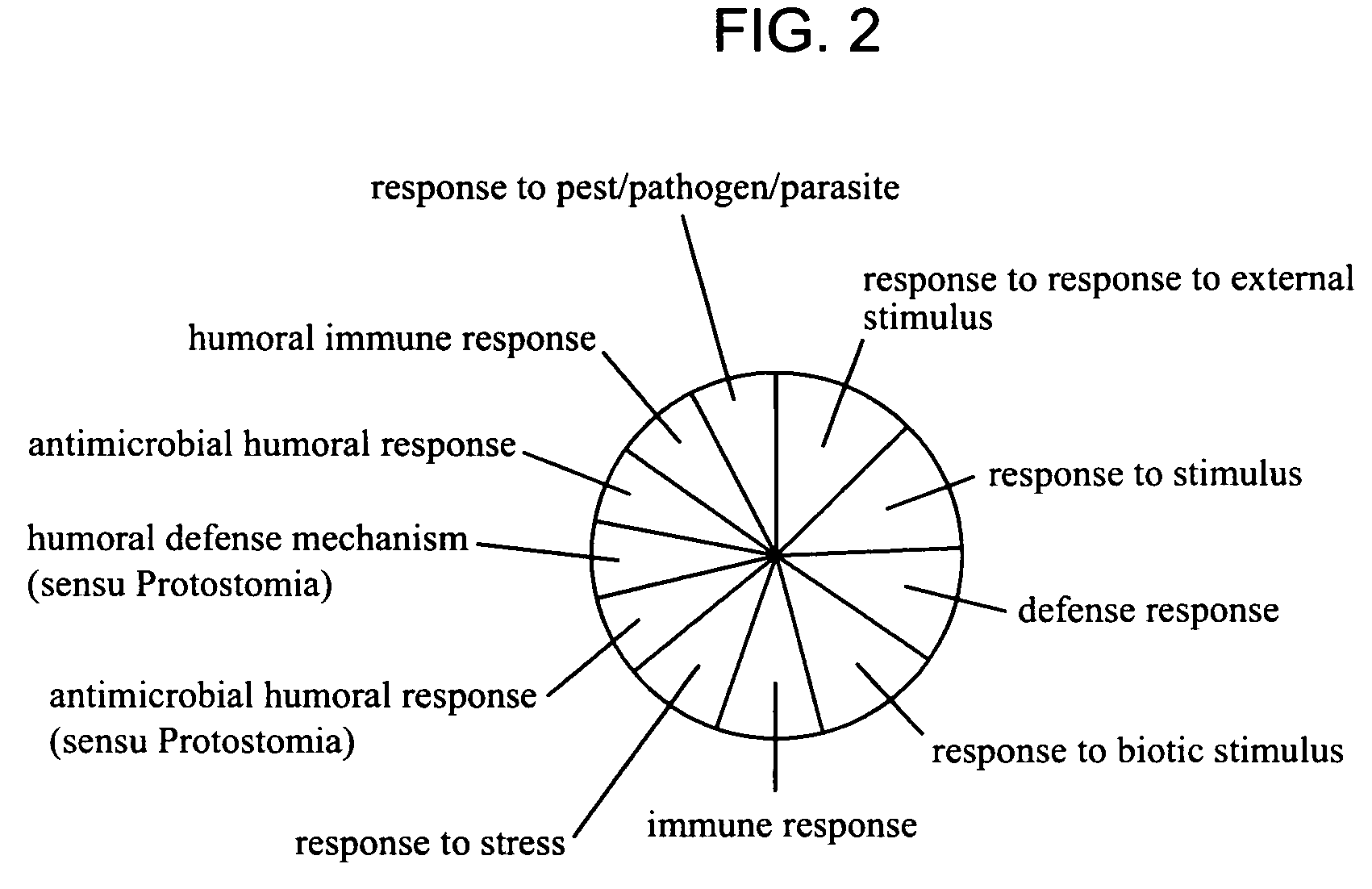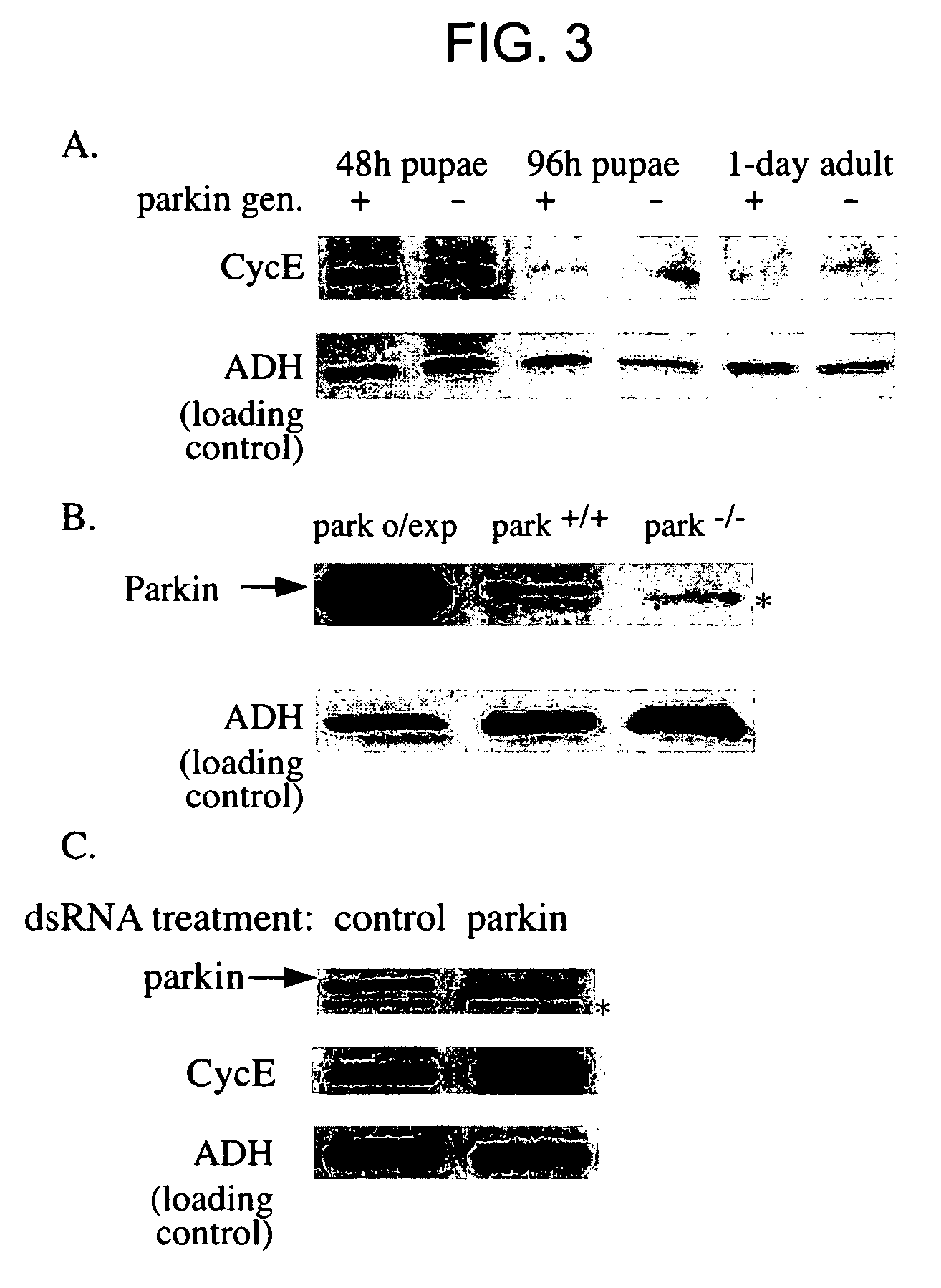Methods and compositions for screening for modulators of Parkinson's disease
a technology of parkinson's disease and modulator, which is applied in the field of methods and compositions for screening for parkinson's disease modulators, can solve the problems of parkin pathogenesis, inability to draw conclusions, and inappropriate activation of the cell cycle, and achieve the effects of suppressing enhancing the parkinson's disease phenotype, and increasing the level of glutathione s-transferas
- Summary
- Abstract
- Description
- Claims
- Application Information
AI Technical Summary
Benefits of technology
Problems solved by technology
Method used
Image
Examples
example 1
Transcriptional Profile of 1-Day Old Parkin Mutants
[0108]To examine the differences between parkin mutants and controls at the transcriptional level, expression analysis was performed on whole 1-day-old adult flies using cDNA microarrays. This time point was chosen as 1-day-old parkin mutants show clear phenotypes including muscle degeneration, indicating that transcriptional differences between parkin mutants and controls are likely present. The microarrays used for these experiments contain approximately 6,000 spotted Drosophila cDNAs (Drosophila Gene Collection 1); about 45% of the predicted genes in the genome. Control and mutant RNAs were labeled, hybridized to the chips, and the ratio of the signals was determined for each spot. After normalization, the Cyber T algorithm (available on the worldwide web at visitor.ics.uci.edu / genex / cybert / ) was used to identify any spots with significantly altered expression (altered intensity ratios) in parkin mutants relative to controls.
[010...
example 2
Characterization of Muscle Degeneration in Parkin Mutant Pupae
[0110]Prior to proceeding with further transcriptional profiling experiments, it was necessary to establish a stage early in the time course of muscle degeneration to minimize downstream effects. To determine an appropriate time point, parkin mutant pupal flight muscles were examined by transmission electron microscopy (TEM). TEM sections were taken of the indirect flight muscle of parkin mutants and controls at various time points after puparium formation (APF). As previously reported, 96 hour pupal flight muscles display mild mitochondrial pathology. However, at 48 hour APF, the morphology of mutant flight muscles were indistinguishable from controls in terms of morphology of the developing myofibrils, and the mitochondrial integrity of parkin mutants appeared identical to that of controls. The overall structure and size of the mitochondria, as well as the structures of the cristae, are indistinguishable between parkin ...
example 3
Transcriptional Profile of 48h Parkin Mutant Pupae
[0111]RNA was extracted from 48h parkin mutant and control pupae and hybridized to larger cDNA arrays containing approximately 12,000 cDNA spots (Drosophila Gene Collections 1 and 2). This represents a large portion of the number of predicted genes in the genome, which is approximately 14,000. The hybridizations and statistics were carried out in the same manner as for the 1-day-old adult time point, and for this analysis, a false discovery rate of 1% was also used. 26 genes showed altered expression in parkin mutants relative to controls, and these are shown in Table 1A and 1B.
[0112]
TABLE 1AGenes up-regulated in parkin mutant pupae1fold expressioncDNAgeneFunctionchangeImmune relatedRH02253Dptantibacterial humoral response3.8RH25931IM4immune induced molecule3.6LD44267CG1105immunoglobulin3.4LP07339LysElysozyme, antibacterial response3.3LP06719LysSlysozyme, antibacterial response2.5LP05763AttAantibacterial humoral response2.2Oxidative ...
PUM
| Property | Measurement | Unit |
|---|---|---|
| pH | aaaaa | aaaaa |
| pH | aaaaa | aaaaa |
| distance | aaaaa | aaaaa |
Abstract
Description
Claims
Application Information
 Login to View More
Login to View More - R&D
- Intellectual Property
- Life Sciences
- Materials
- Tech Scout
- Unparalleled Data Quality
- Higher Quality Content
- 60% Fewer Hallucinations
Browse by: Latest US Patents, China's latest patents, Technical Efficacy Thesaurus, Application Domain, Technology Topic, Popular Technical Reports.
© 2025 PatSnap. All rights reserved.Legal|Privacy policy|Modern Slavery Act Transparency Statement|Sitemap|About US| Contact US: help@patsnap.com



